Aboard the International Space Station (ISS), an astronaut’s life is typically work, exercise, rest, repeat. However, what if your chance of having the right stuff for NASA’s astronaut corps is, to say the least, minimal?
Aurora Station, billed as the “first luxury hotel in space,” might be for you. Houston, Texas-based Orion Span Inc hopes to launch the modular station in late 2021 and welcome its first guests the following year, with two crew members accompanying each excursion.
The platform would orbit 320km above the Earth, offering six guests 384 sunrises and sunsets as they speed around the planet for 12 days.
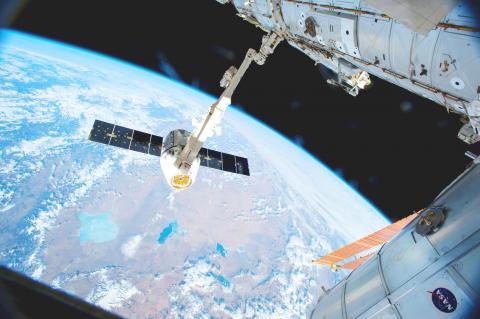
Photo: AFP / NASA
Once, such a thing would have clearly been the stuff of fiction. Now, in the age of Space Exploration Technologies Corp (SpaceX), Blue Origin LLC, and Virgin Galactic, the idea that a private company would launch an orbiting hotel seems almost pedestrian.
“We want to get people into space because it’s the final frontier for our civilization,” said Orion Span founder and chief executive officer Frank Bunger, a former software engineer.
However, Orion Span’s offering would not be for everyone: Launch and re-entry are not for the faint of heart.
“We’re not selling a hey-let’s-go-to-the-beach equivalent in space,” Bunger said. “We’re selling the experience of being an astronaut. You reckon that there are people who are willing to pay to have that experience.”
Beyond the physical limitations to embarking, there are also the fiscal ones. The 12-day stay starts at US$9.5 million per person, or about US$791,666 a night.
Aurora Station is planned as a 10.6m-by-4.3m module, or roughly the interior volume of a Gulfstream G550 private jet, Bunger said.
The station would accommodate as many as four guests, plus the two crew. The company requires an US$80,000 deposit, which is fully refundable, and began accepting payments on Thursday.
Orion Span is assessing potential funding sources to get the endeavor off the ground, but would not disclose how much it wants to raise for the project, a spokeswoman said.
It reflects the type of commercial venture that has become more common over the past decade, fueled by decreases in launch costs and an influx of venture capital.
Since 2015, start-up space companies have attracted US$7.9 billion in investment, according to Bryce Space & Technology LLC, a consulting firm.
“The commercialization of LEO [low Earth orbit] is an exciting prospect, but it will be an exercise in determining what ideas are more real than others,” said Phil Larson, a former space policy adviser to former US president Barack Obama who worked for Elon Musk’s SpaceX. He is now assistant dean and chief of staff at the University of Colorado at Boulder’s College of Engineering and Applied Science.
Orion Span has yet to contract with a launch provider, either for its initial flights to build the station or for customer flights.
The start-up’s aggressive four-year time frame might be a ploy to assess “what kind of market might be out there for this,” Larson said.
Van Espahbodi, managing partner of Starburst Accelerator LLC, a consulting and venture firm, said that the public-relations push behind Orion Span might be an effective way to help the company attract funding, too.
Orion Span’s chief architect and operating and chief technical officers are former NASA employees.
The company said it is “developed proprietary technology to drive a full order of magnitude of cost out of the design and manufacture of a space station.”
Bunger said the firm’s designs would work with most of the current launch configurations, such as Arianespace, SpaceX and United Launch Alliance.
It could also partner with a government space agency, he said.
One reason Orion Span can target a price of less than US$10 million per person is because of declining launch prices, Bunger said in an interview.
“Everybody’s forecasting that they’re going to fall,” he said. “Almost every week there’s another rocket launch company that’s starting up with a new way to get to orbit cheaper, faster, better.”
Indeed, Orion Span joins a growing list of entrepreneurial firms that see cheaper access to space leading to a demand for more real estate in low Earth orbit.
Bigelow Aerospace LLC, founded by lodging billionaire Robert Bigelow, in May 2016 deployed its 2.4m, 1,360kg inflatable activity module on the ISS.
In October last year, NASA extended the two-year service period for the module — which is used for storage — to remain part of the space station until at least 2021.
Axiom Space LLC, a Houston-based company also run by NASA veterans, said it plans to launch habitation modules to complement the ISS.
Arizona-based World View Enterprises Inc is developing a fleet of high-altitude platforms, called stratollites, carried by balloons to the edge of space. The stratollites are used for communications, surveillance, weather forecasting, atmospheric research and other applications.
World View last week said it had raised a total of US$48.5 million.
However, the new world of commercial spaceflight has yet to launch a human into space, let alone civilians and leave them there for two weeks.
Prior to launch, Aurora Station travelers would have three months of training, beginning with online courses to understand “basic spaceflight, orbital mechanics and pressurized environments in space.”
Hotel guests would also have required exercises on spacecraft systems and contingency training at the company’s Houston facility.
No word yet on the minibar or turndown service.
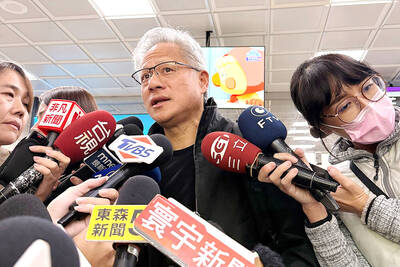
PERSISTENT RUMORS: Nvidia’s CEO said the firm is not in talks to sell AI chips to China, but he would welcome a change in US policy barring the activity Nvidia Corp CEO Jensen Huang (黃仁勳) said his company is not in discussions to sell its Blackwell artificial intelligence (AI) chips to Chinese firms, waving off speculation it is trying to engineer a return to the world’s largest semiconductor market. Huang, who arrived in Taiwan yesterday ahead of meetings with longtime partner Taiwan Semiconductor Manufacturing Co (TSMC, 台積電), took the opportunity to clarify recent comments about the US-China AI race. The Nvidia head caused a stir in an interview this week with the Financial Times, in which he was quoted as saying “China will win” the AI race. Huang yesterday said
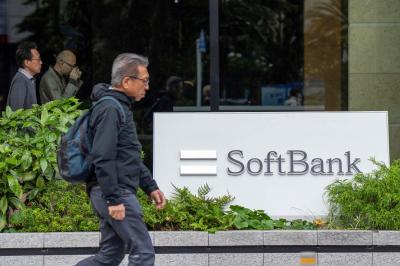
Japanese technology giant Softbank Group Corp said Tuesday it has sold its stake in Nvidia Corp, raising US$5.8 billion to pour into other investments. It also reported its profit nearly tripled in the first half of this fiscal year from a year earlier. Tokyo-based Softbank said it sold the stake in Silicon Vally-based Nvidia last month, a move that reflects its shift in focus to OpenAI, owner of the artificial intelligence (AI) chatbot ChatGPT. Softbank reported its profit in the April-to-September period soared to about 2.5 trillion yen (about US$13 billion). Its sales for the six month period rose 7.7 percent year-on-year
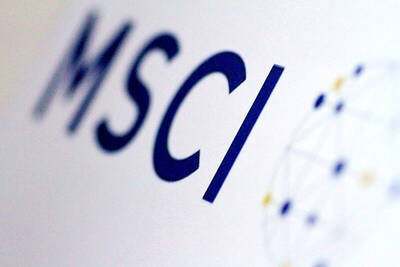
MORE WEIGHT: The national weighting was raised in one index while holding steady in two others, while several companies rose or fell in prominence MSCI Inc, a global index provider, has raised Taiwan’s weighting in one of its major indices and left the country’s weighting unchanged in two other indices after a regular index review. In a statement released on Thursday, MSCI said it has upgraded Taiwan’s weighting in the MSCI All-Country World Index by 0.02 percentage points to 2.25 percent, while maintaining the weighting in the MSCI Emerging Markets Index, the most closely watched by foreign institutional investors, at 20.46 percent. Additionally, the index provider has left Taiwan’s weighting in the MSCI All-Country Asia ex-Japan Index unchanged at 23.15 percent. The latest index adjustments are to
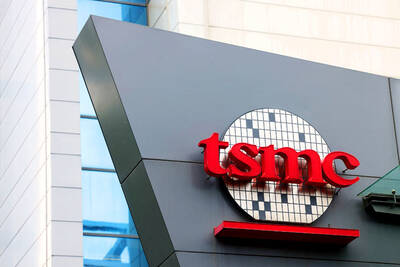
CRESTING WAVE: Companies are still buying in, but the shivers in the market could be the first signs that the AI wave has peaked and the collapse is upon the world Taiwan Semiconductor Manufacturing Co (TSMC, 台積電) yesterday reported a new monthly record of NT$367.47 billion (US$11.85 billion) in consolidated sales for last month thanks to global demand for artificial intelligence (AI) applications. Last month’s figure represented 16.9 percent annual growth, the slowest pace since February last year. On a monthly basis, sales rose 11 percent. Cumulative sales in the first 10 months of the year grew 33.8 percent year-on-year to NT$3.13 trillion, a record for the same period in the company’s history. However, the slowing growth in monthly sales last month highlights uncertainty over the sustainability of the AI boom even as